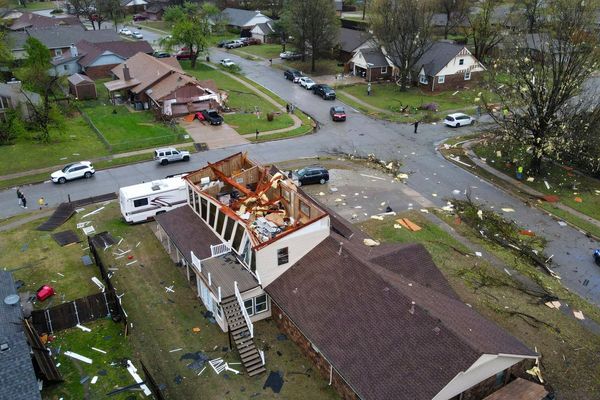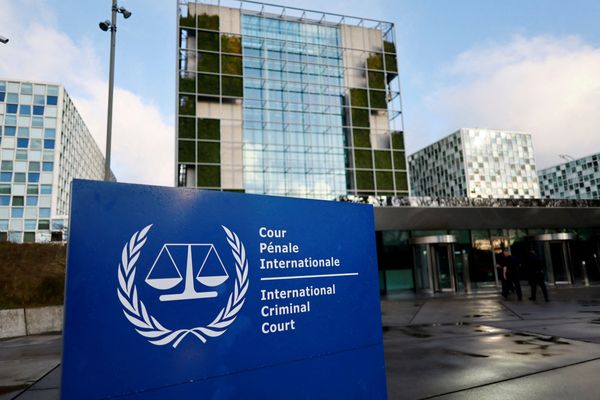
After 250 years of European settlement and the advanced scientific knowledge of the 21st century, California is still not fully prepared for the earthquakes and wildfires that are an integral part of its dramatic landscape.
The very first European settlers to the state, Spanish missionaries, were confronted by damaging earthquakes. Between 1769 and 1833, the Spanish constructed 21 missions in total, eight founded by Fr. Junípero Serra. In 1812, a powerful quake — today, estimated at a magnitude of 7.5 and believed to have been caused by the San Andreas Fault — shook Southern California and immediately destroyed seven missions. Forty Native Americans died in the San Gabriel Arcángel mission when the roof collapsed. Lacking understanding of what caused earthquakes or how buildings could be protected, the missions were rebuilt using the traditional materials of mud bricks, wooden planks and tiles.
By 1848, California was a U.S. territory, though with few Mexican or American residents. In January of that year, gold was discovered at Sutter's Mill near Sacramento, and within 12 months, more than 300,000 immigrants from across the world had poured into the region. By 1850, California was admitted as a free state into the union, and San Francisco was now an important international port and the largest city west of the Mississippi.
By 1906, San Francisco had 400,000 residents, and it was still growing. The city had adopted a few rudimentary building codes, though none addressing earthquakes. At 5:12 a.m. on April 6, 300 miles of the San Andreas fault ripped apart, causing a magnitude 7.9 earthquake. The huge shock collapsed hundreds of buildings in downtown San Francisco; water and gas mains tore open, causing a huge fire. The combined disaster killed 3,000 people and left 200,000 homeless.
In the days following, civic leaders pressured newspaper publishers to label the disaster a fire — not an earthquake. While many insurance policies covered fires, none mentioned earthquakes. Leading business figures reassured investors from New York and Europe that the quake was a rare, "one-time" event. To assuage public concern, the city mounted a major effort to improve fire response, including the construction of dozens of large cisterns at strategic points, and linked them to a new system of mains and hydrants. With civic leaders reluctant to acknowledge earthquake danger, no new building codes addressing quake safety were implemented. In fact, existing building codes were suspended for many months to encourage rebuilding.
It took another major disaster, the 1933 Long Beach earthquake, to spur the state legislature into quake safety. The temblor, estimated at magnitude 6.4, struck on March 10 along the Newport-Inglewood fault, causing 120 deaths, 500 injuries and widespread destruction, including the collapse of 70 schools. It soon was dubbed the "Lucky Quake," having struck at 5:56 p.m. on a Friday, when schools had already closed and many residents had already left work.
The possibility that thousands of schoolchildren could be crushed in future quakes spurred the state legislature into action. It soon passed the Field Act, which tightened the codes for new school buildings and banned the construction of unreinforced masonry buildings (e.g., brick). The 1933 temblor also prompted the state to authorize research into seismology and how structures could be constructed to resist shaking.
Over the following decades, scientists made major advances in understanding earthquake dynamics and new construction techniques to protect structures.
Two major earthquakes in 1971 and 1989 prompted additional legislation. The February 1971 Sylmar earthquake, centered in the San Fernando Valley, destroyed two hospitals, killing 65 and injuring 2,000. The state legislature soon restricted construction of high occupancy buildings in active fault zones.
On October 17, 1989, millions of Americans witnessed an earthquake in progress as the Loma Prieta quake interrupted the beginning of a World Series game at San Francisco's Candlestick Park. The temblor, magnitude 6.9, destroyed some 1,000 homes, caused 64 deaths, collapsed freeways and a portion of the San Francisco-Oakland Bay Bridge. The state implemented more seismic safety rules, including "infrastructure resilience," spurring reinforcement of bridges and freeway overpasses and retrofitting of "soft story" buildings (e.g., apartments built atop first floor garages).
As of 2025, California has the most advanced earthquake safety building codes in the country. While engineers are confident that recently constructed structures, including downtown high rises, will do well in future quakes, many thousands of buildings erected before the new, tighter codes went into effect, remain vulnerable.
Wildfires, a modern phenomenon of destruction
While earthquakes have caused disasters since early California, death and building destruction from wildfires is a modern phenomenon. With California's population near 40 million, the need for housing has prompted builders to tempt fate by erecting homes in fire-prone areas.
The terrible Los Angeles fires of early January 2025 have made the nation aware of Southern California's infamous Santa Ana winds. These powerful winds begin when a high-pressure system is stalled over the Southwest, and air is forced down through the Santa Mountain's narrow canyons, potentially reaching 100 miles per hour.
Before 1940, few homes were built in the region's canyons and hillsides. In 1940, the Rindge family, which owned 17,000 acres of Malibu coastline, faced bankruptcy and began selling off parcels.
Within a decade, more than 5,000 residents lived in Malibu. Architects warned of the danger of building in the area, known to be fire-prone, but local government declined to act. On Dec. 27, 1956, a wildfire broke out near Zuma Beach, eventually charring 26,000 acres and destroying 100 homes.
This event marked a turning point. The Eisenhower administration, busy building a civil defense network in the middle of the Cold War, worked with Congress to pass new disaster relief laws. The Malibu fire area was declared a "disaster zone," and homeowners who lost buildings became eligible for disaster relief.
One fire historian remarked that the government had subsidized a "lethal mixture of homeowners and brush." Local governments, pressured by real estate interests, still declined to restrict building in fire-prone areas.
In 1961, however, the Bel Air fire tore through one of Los Angeles' wealthy neighborhoods. Powered by fierce Santa Ana winds, the fire destroyed 500 houses, including the homes of many celebrities, including actors Burt Lancaster, Dennis Hopper, Zsa Zsa Gabor, Joan Fontaine and Joe E. Brown.
The fire attracted nationwide attention, with Life magazine's headline declaring "A Tragedy Trimmed in Mink." The publicity forced local leaders to confront the problem. Initially, the city prohibited the construction of new homes with wood shingles and called for homeowners in fire regions to clear brush from their properties.
Facing opposition from builders and the timber industry, the state continued to allow wood shingle roofs until 2001. Finally, in 2012, the state required all wooden roofs to be replaced with fire resistant materials such as metal or ceramic tile. The city of Los Angeles has also tightened building laws on new homes and requires homeowners to clear the brush in their backyards.
Will the hugely destructive Pacific Palisades and Altadena fires of January lead to tougher building codes or restrictions on building in known fire zones? A debate is now underway. Some architects have called for tough new codes that would require new homes in wildfire zones to be "hardened," built of concrete with metal roofs and devoid of any nearby trees and bushes. Citing the state's longstanding housing shortage, other pro-growth interests advocate loosening building codes to allow for faster rebuilding.







